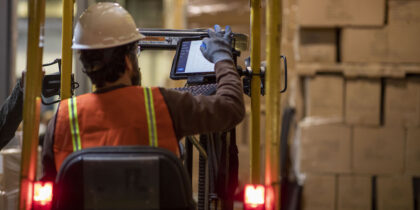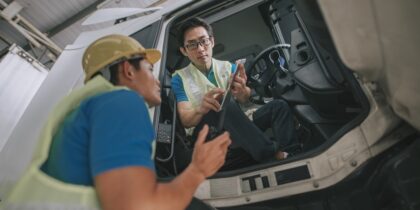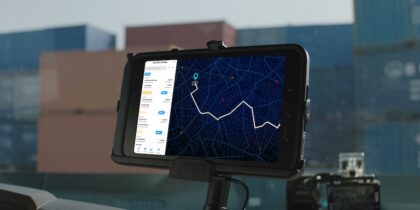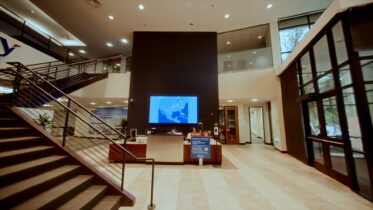Even with a high-resolution screen embedded in the seatback in front of them, a growing number of passengers prefer to use their own devices for in-flight entertainment.
According to Aviation Today, there are currently 5,000 aircraft with in-flight connectivity, and an additional 30,000 commercial aircraft that will be connected through 2022. In-flight entertainment and connectivity (IFEC) systems are typically categorized into hardware, connectivity and content. Hardware is further divided into portable and fixed, while content is classified as either stored or streamed access.
While embedded IFEC systems are still the norm, the portable electronic device (PED) segment is expected to continue to boom due to the personalized traveler experience that mobile devices can offer. With the increasing popularity of the “bring your own device” (BYOD) trend, connection-hungry travelers are opting to use their own smartphones and tablets that already contain their favorite media and apps in order to create a customized travel experience. A recent survey from FlightView found that some 82 percent of flyers in North America carry a smartphone, 37 percent carry a tablet and 38 percent carry a personal computer. Why would a flyer want to learn how to operate a new device and operating system when the familiar option is just an arm’s reach away?
One of the factors boosting BYOD rates is the relaxation of usage rules by the Federal Aviation Administration (FAA) in conjunction with the Federal Communications Commission (FCC) that allow greater use of PEDs inside aircraft.
Airline IFEC Offerings Vary by Market Segment
While some airlines continue to opt for embedded IFEC technology, especially in certain flight segments or aircraft types, others are optimizing for the BYOD traveler experience. That means investing in in-seat power, onboard Wi-Fi and access to a wireless IFE system so passengers will use the PEDs they’re already comfortable with to connect to an onboard server and use it to stream in-flight entertainment.
American Airlines, Southwest, United Airlines, Japan Airlines, Lufthansa and a number of other carriers have jumped on the BYOD connectivity bandwagon. For example, Singapore discount carrier Scoot prefers to market in-flight entertainment products rather than invest in embedded devices.
However, some airlines with intercontinental segments and/or premium services, such as Delta and Singapore Airlines, are ordering or upgrading their aircraft with embedded seatback screens for an upscale traveler experience. Similarly, Emirates has stated that it will outfit 150 new 777X aircraft with seatback IFE.
Consumer Demand Drives Bandwidth Evolution
Passengers have shown a preference for web-based interface access to in-flight entertainment content, rather than accessing stored content through a browser experience. To support this demand, carriers are moving from air-to-ground systems that link with the terrestrial cell phone network to providers that offer connectivity via high-throughput satellite capabilities. These satellites make it possible to provide in-flight media streaming, geopositioning services and other applications for PED users.
Implementation of IFEC technologies varies by aircraft type — narrow-body aircraft (NBA), wide-body aircraft (WBA) and very large aircraft (VLA) — which is also related to market segment. Current market dynamics indicate that wide-body aircraft may lose some market share to narrow-body types due to greater fuel economy. However, smaller aircraft also translate to less space and carrying capacity for the hardware and infrastructure required for embedded systems. Gogo, a large aviation Wi-Fi provider, positions its media server system as a cost-saving measure for airlines because, as its marketing materials note, the product adds “no more weight than a can of ginger ale,” according to Bloomberg.
While satellite capacity is improving, it’s not yet to the point that a planeload of people can have full internet access to stream media. That’s why wireless capabilities are being used to augment in-flight connectivity to onboard media that directs passengers away from the bandwidth demands of full video streaming.
In-Flight Security Faces Challenges
Security is one of the main challenges facing BYOD implementation, both in the air and on the ground. Even though the consumer devices are outside the carriers’ or vendors’ IT infrastructure, they still connect to the network and represent a risk that must be managed.
One of the biggest challenges is ensuring that no one using in-flight Wi-Fi is able to maliciously access the plane’s operational systems. The system must also ensure that passenger data is discrete from operational data, with flight data handled by a robust system that won’t be affected by a fault in the passengers’ connection.
PED users expect a seamless connectivity experience between the ground and the air, so carriers will continue to experience demand for IFEC in order to create a differentiated travel experience. But they face challenges in delivering the bandwidth necessary to satisfy digitally savvy travelers, while also ensuring a secure operating environment.
Mobile technology isn’t just changing the in-flight entertainment experience. It’s also enhancing in-flight purchases.








